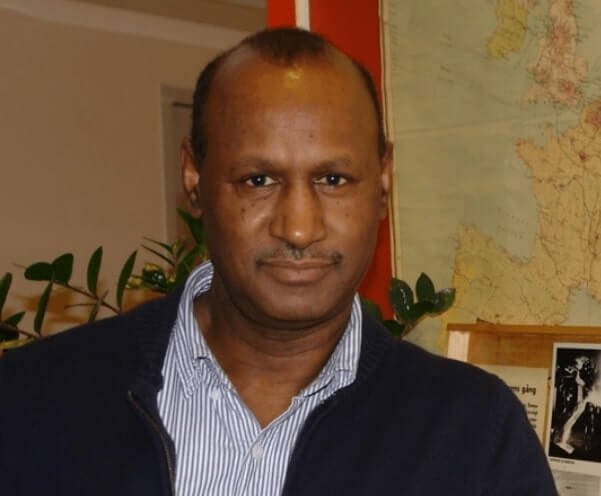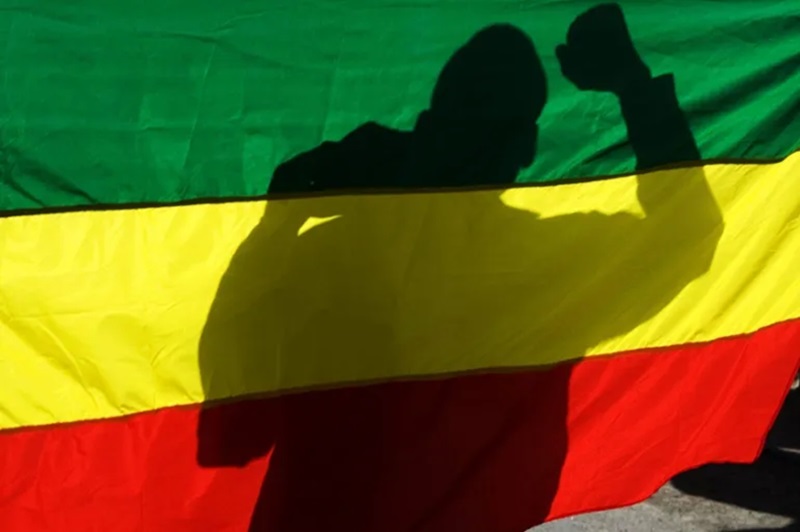Tsegaye Tegenu, PhD
2024-06-09
This section summarizes our discussion so far and focuses on what the vision of the long-term plan should be. It highlights the design flaws of the ten-year development plan and proposes an alternative vision for the country.
To sum up, the different parts of our discussion on long-term planning so far deal with the technical aspects of formulating a long-term plan. This includes:
- i) Identifying the development problems that need to be addressed, and understanding the time and spatial dimensions of these problems to see how issues vary over time and across different regions.
- ii) Conducting comprehensive contextual and situational analysis of the identified problems, such as macroeconomic and sector assessment, informal economy and addressing cross-cutting issues like productivity, gender, or the environment.
iii) Performing a SWOT analysis, followed by in-depth root cause analysis and needs assessments.
- iv) Conducting additional analyses as necessary, such as gap analysis, stakeholder analysis, policy analysis, impact analysis, and risk analysis.
- v) Carrying out further analyses important for planning and forecasting future developments, such as scenario analysis, model building, and trend analysis.
- vi) Performing analyses necessary for evaluating the viability and effectiveness of proposed solutions, including feasibility analysis, cost-benefit analysis, and cost-effectiveness analysis.
These technical analyses form the foundation for vision formulation, goal setting, and strategy identification in the development of a long-term national development plan.
A vision is a clear, inspirational, and long-term desired change resulting from an organization or country’s efforts. It serves as a guiding star, articulating what the organization or nation aspires to achieve in the future. For a long-term national development plan, the vision reflects the overarching aspirations and ultimate impact the country aims to accomplish.
Goal setting involves defining specific, measurable, achievable, relevant, and time-bound objectives that align with the vision. Goals break down the vision into concrete milestones and targets that can be systematically pursued. In the context of a national development plan, goals translate the vision into actionable outcomes that guide policy and decision-making.
Strategy identification is the process of determining the best course of action to achieve the set goals. It involves analyzing various options, selecting the most effective approaches, and planning the implementation steps. Strategies provide a roadmap for achieving goals and realizing the vision, detailing how resources will be allocated and efforts coordinated.
It is after accomplishing these components—vision formulation, goal setting, and strategy identification—that we turn to the analysis of policy areas and intervention instruments. This stage often involves specialized experts in the respective fields, ensuring that the strategies are effectively translated into actionable policies and interventions.
In Part Seven, we will discuss the vision formulation of the long-term national development plan, taking the example of the ten-year development plan. It is stated that “The ten-year development plan lays a long-term vision of making Ethiopia an ‘African Beacon of Prosperity.’” This ambitious vision sets a high bar for the country’s development and aims to position Ethiopia as a model of economic success and social progress on the continent. The question is: Is this vision realistic and inspiring? Is this vision both achievable and motivational?
For a vision to be achievable, especially one as ambitious as becoming an “African Beacon of Prosperity,” it requires a thorough understanding of the country’s potential in relation to other African countries. This necessitates an in-depth comparative analysis, including analyzing competitive advantages, understanding external factors, evaluating policy effectiveness of other nations and identifying best practices. You do not find such kind of an in-depth comparative analysis in the ten-year development plan.
The vision “African Beacon of Prosperity” appears to be based more on political ambition than on a technical analysis of the long-term plan. Without grounding in rigorous analysis and practical assessment, it risks being irrelevant and unattainable. Additionally, it fails to be motivational. A vision should inspire and energize the people of the country, encouraging them to commit to and work towards its achievement. The Ethiopian people and youth desire to be free from incessant internal civil war and chronic poverty, rather than striving to be seen as “above” other people. They have significant challenges to address internally. The vision should reflect the priorities and pressing challenges faced by Ethiopian people
Given the current situation of the country, my view is that the vision should have an inward focus. When formulating a vision, the focus should be on a thorough self-assessment and root cause analysis of conflicts, poverty, scarcity, economic stress and strain rather than comparing with or judging other countries. This inward-focused approach ensures that the vision is both inspiring and attainable, grounded in the realities, needs and potential of the country.
Even if one has an inward-focused approach, still there remains a difference in approaches, emphasis and setting of priorities. Some old long-term plan contains a vision with the phrase “sustainable, equitable, and prosperous society”. These terms are overused to the extent of becoming vague. I have an alternative vision which is more precise and actionable and this vision incorporates the effects of rapid population growth in the country.
I suggest the vision of the long-term national development of Ethiopia be “Creation of post-scarcity economy and thriving middle-class society by 2045”. This vision emphasizes the goal of eliminating scarcity, meaning that all essential resources (food, water, energy, healthcare, education) are abundantly available to everyone. It implies entrepreneurship building, market development, economic structural transformation, and spatial development. The aim here is to create a society where the majority of the population enjoys a middle-class standard of living. This involves not just economic growth, but also substantial upward mobility, widespread education, and job opportunities that allow people to achieve and maintain a middle-class lifestyle.
East Asian Tigers (South Korea, Taiwan, Hong Kong, Singapore) moved a significant portion of their populations into middle-class status within approximately 20-30 years through rapid industrialization, export-oriented growth, and substantial investments in education and infrastructure. China has seen a dramatic rise in its middle class over the past 40 years.
















I.m gonna use my dear brother’s well thought out article to say a word or two on my mind regarding economic development in the old country. In my previous comments I have spoken about the achievements of certain East Asian countries namely South Korea, Taiwan and Singapore.
When I mentioned Singapore as a poster child for industrialization and social transformation, its being a small city state is not lost on me. But still there is a lot that can be referred to for city developers in charge of metropolitan areas like Dire Dawa, Addis/Finfinne, Jimma, Awasa, Jijgije, Bahir Daar, Mekele and others like these. South Korea, Taiwan and even Thailand and Malaysia have a lot to learn from. I had written about this on comment sections on other websites going back in the early 2000’s. That is because I had the chance to witness their blindingly fast transformation on the spot during my several business trips there going back to the 1970’s.
I’m aware that some of you may try to invalidate my suggestion using some facts such as the geopolitics of the 1960’s which was everywhere including Africa. Those Asian countries I mentioned were ruled by authoritarian regimes just like almost all of the then African nations. In my opinion, those African nations even had more motivating factors(reasons) than their Asian counterparts. Except Ethiopia, Liberia, Egypt and South Africa the rest of Africa had just tossed away the yoke of colonialism in 1960 almost the same time Singapore told Malaysia enough is enough and went on to going it all alone. But South Korean, Taiwan and Singaporean despotic leaders had a doable development plan. They said to the Western Powers ‘Yes Sir’ and absorb every adaptable technology like a sponge. Chiang Kai-shek was not only busy sniffing out sleeping cells of commies but he had launched the island wide ‘Great Construction’ of highways, railways and port facilities. He sent young Taiwanese in their tens of thousands to the colleges and technical schools in the Western countries and they did not disappoint. They absorb every technological skill they could put their hands on like a sponge. South Korean and those from Singapore did the same. When they went back to their respective countries, they found workable plan tossed on their laps. It was like the best music to their ears. Some of you may also try to dispute this suggestion by unknowingly to argue that Taiwan or Singapore did not have the ethnic issues and complexities like ours. How wrong you are about that. Chiang Kai-shek had tried everything to make Taiwan a monolingual nation by outlawing the Hokkien and Hakka dialects. My wife’s and mine longtime Taiwanese friend told us how she was paraded in her classroom as a kid when she was caught speaking in the Hokkien dialect in stead of Mandarin. She was punished with wearing a dog tag that read ‘I was a dog today’. That was excessive and cruel but on the other hand his regime was building facilities for factories throughout that island. It all became just like they say ‘If you build it, they will come!’ That created a massive middle class population that end up being the grave digger of despots. The same happened in South Korea. Park did not disappoint no matter he brutal he was.
But on the other side of the Indian Ocean, it was a different story. It did not take too long for the independence celebration to be abruptly over in every newly independent country in Africa. When those Asian rulers gave their citizens practical development plans tailored specifically to their nations, their African contemporaries were hatching one violent coup d’état after another. In our case of Ethiopia and Somalia violent overthrow of regimes, violent and destructive civil wars with all their massacres and killer famines have become the decals on their faces they are known for. Demonic Marxist/Leninist/Maoist literature became the guiding ‘light’ for the should-have-known-betters. Even their writings were scripted as photocopies of those by Marx, Lenin and Mao. I remember tracts with headlines like ‘Some Notes on’ and ‘On Questions of’ on this or that subject ala Lenin, Stalin and Mao. We were told ‘American Imperialism’ has been exploiting our old country since the first visit by US Envoy Robert P. Skinner in 1903. When I asked to name one American company controlling the old country’s economy, there were none, not even one. Those who wrote those tracts were just reciting their demonic idols/mentors, Marx, Lenin, Stalin and Mao demonic sermons. The same mumbling and jumbling was in full swing in the rest of Africa. By the time all is said and done once blooming landscapes had turned into scorched earth with millions death due to stupid wars and avoidable nature’s calamities. That is where the age old saying ‘We missed the boat’ perfectly qualifies. But is the boat now out of reach? Absolutely not! All we have to do is wake up to it, get into a state flux, focus on the economy, come up with a workable development plan and go on no-holds barred industrialization. Turn that country upside down with factories here, factories there and factories everywhere.